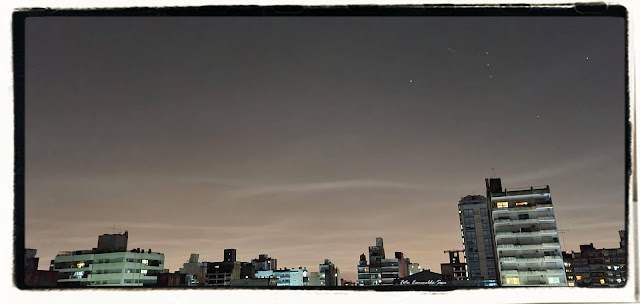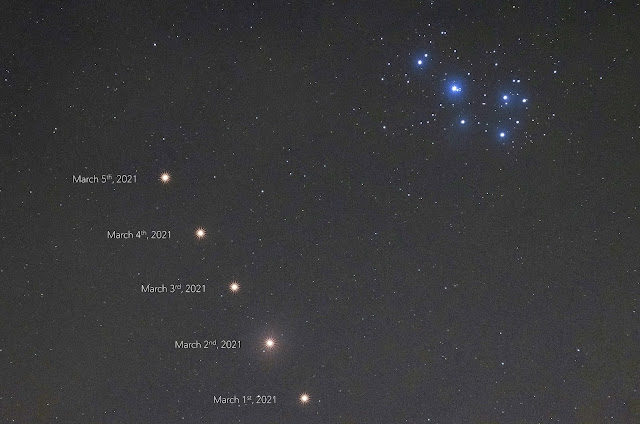I like astronomy, archaeology, photography, music and drinking a lot of tea. I hate politics. Something that annoys me: that I shall not respect the permanence, and to take me by what I'm not. The best sign: VIRGO. The worst: the health. The best: adapt and know how to get ahead. FIRST BLOG: esplaobs.blogspot.com, SECOND BLOG: esplaobs02.blogspot.com, RETRO BLOG: esplaobs01.blogspot.com, YOUTUBE CHANNELS: esplaobs, esplaobs. ext02. Instagram: esplaobsrosario. Welcome to my BLOGs !
Wednesday, March 31, 2021
Tuesday, March 30, 2021
THE NEW SCIENCE DOME OF THE NATIONAL CENTER FOR METEOROLOGY (NCM) FEATURES A GROUND-BREAKING NEW 4D SYSTEM AND OFFERS 60 SEATS IN A 12M DIAMETER DOME //// ZEISS SOFTWASRE UNIVIEW SUPORT
In February, a new 4D science visualization dome with special effects was handed over by our partner Visuals Attraction in Abu Dhabi (UAE). The new Science Dome of the National Center for Meteorology (NCM) features a ground-breaking new 4D system and offers 60 seats in a 12m diameter dome. The 6k projection system is primarily used to display their own weather data and weather simulations in real time. The Science Dome will be used to host VIP guests such as internationally recognized meteorologists, as well as events for school groups and public screenings of a film on Cloud Seeding and Rain Enhancement Programme from the NCM. The Science Dome can also simulate weather effects such as fog, wind, heat and vibrations.
ZEISS supplied the software and hardware on which the weather data simulations run. ZEISS UNIVIEW #zeissuniview is used with corresponding customer-specific modules. This way the well-known software for real-time visualization of the universe dynamically displays simulations of weather data on Earth. ZEISS UNIVIEW and Visuals Attraction thus demonstrate another exciting way of experiencing scientific phenomena that goes far beyond the classic planetarium.
Photo: courtesy of Visuals Attraction.
INTERNATIONAL SPACE STATION IN FRONT OF MOON Taken by Szabolcs Nagy on March 23, 2021 @ London, UK

International Space Station in front of Moon I've been planning this event for 2 weeks, I saw the forecast well before the event, but it was way too early to be sure about possible success, so many details must come together. A day before weather looked somewhat stable weirdly, so I rented a vehicle to be able to travel a bit and decided to go for it. Circumstances were perfect, ISS arrived at the predicted time and.... I was filming the southern region of Moon and the Space Station looked totally awesome in front of Moon. I purposefully positioned myself so, that ISS goes 'in and out' of the lunar surface. Then I went for the unique editing, in which I focus on the Space Station as a fix point and the lunar surface moves in the background. This changes the whole perspective. Hope you like it just as much as I do! :) II+II Video summary: https://m.youtube.com/watch?v=rJlZEdaat64&feature=youtu.be Equipment: Skywatcher 250/1200 dobson telescope Zwo ASI224MC color camera
Monday, March 29, 2021
Saturday, March 27, 2021
Friday, March 26, 2021
Wednesday, March 24, 2021
Tuesday, March 23, 2021
Monday, March 22, 2021
Sunday, March 21, 2021
" FIRST QUARTER " DESDE ROSARIO - ARGENTINA //// FOTO: ESMERALDA SOSA
.. 9pm ..
PARA VER FOTO EN HD ABRIR SIGUIENTE LINK
https://drive.google.com/drive/folders/1c1M4fjBeqU4c-WPEwhCFedsAvR6aKFWn?usp=sharing
Saturday, March 20, 2021
Friday, March 19, 2021
FOGBOW, GLORY, AND BROCKEN SPECTRE Taken by David Blanchard on March 17, 2021 @ Flagstaff, AZ
Fog developed in the wake of a departing winter storm and produced fogbows, Glories, and Brocken Spectres.
In the first photo is a large fogbow segment with a faint Glory and Brocken Spectre.
In the second photo, two short segments of the fogbow can be seen on the top of the fog layer along with a Glory.
Thursday, March 18, 2021
" MIGRANTES A MARTE " POR BRYANT GONZÁLEZ VÁSQUEZ //// MOCHILEROS ASTRONÓMICOS
¿Quienes serán los primeros en llegar a Marte?
Yo he sido uno de los que se inspiró a escribir 🤩y es por eso que decido hoy, hacer el anuncio de mi primera *novela de Ciencia Ficción* Así que con ustedes *Migrantes a Marte*
Recopilando información de la exploración Marciana
Agradezco a *Sebastián Musso*
Disponible en físico y digital en las próximas semanas.
Y puedes reservar o aclarar dudas por mí chat. Muchas gracias.
Wednesday, March 17, 2021
Monday, March 15, 2021
Sunday, March 14, 2021
ZODIACAL LIGHT & MARS Image Credit & Copyright: Joshua Rhoades
Just after sunset on March 7, a faint band of light still reaches above the western horizon in this serene, rural Illinois, night skyscape. Taken from an old farmstead, the luminous glow is zodiacal light, prominent in the west after sunset during planet Earth's northern hemisphere spring. On that clear evening the band of zodiacal light seems to engulf bright yellowish Mars and the Pleiades star cluster. Their close conjunction is in the starry sky above the old barn's roof. Zodiacal light is sunlight scattered by interplanetary dust particles that lie near the Solar System's ecliptic plane. Of course all the Solar System's planets orbit near the plane of the ecliptic, within the band of zodiacal light. But zodiacal light and Mars may have a deeper connection. A recent analysis of serendipitous detections of interplanetary dust by the Juno spacecraft during its Earth to Jupiter voyage suggest Mars is the likely source of the dust that produces zodiacal light.
A VENUS FLYBY Image Credit: NASA, JHUAPL, Naval Research Lab, Guillermo Stenborg and Brendan Gallagher
On a mission to explore the inner heliosphere and solar corona, on July 11, 2020 the Wide-field Imager on board NASA's Parker Solar Probe captured this stunning view of the nightside of Venus at distance of about 12,400 kilometers (7,693 miles). The spacecraft was making the third of seven gravity-assist flybys of the inner planet. The gravity-asssist flybys are designed to use the approach to Venus to help the probe alter its orbit to ultimately come within 6 million kilometers (4 million miles) of the solar surface in late 2025. A surprising image, the side-looking camera seems to peer through the clouds to show a dark feature near the center known as Aphrodite Terra, the largest highland region on the Venusian surface. The bright rim at the edge of the planet is nightglow likely emitted by excited oxygen atoms recombining into molecules in the upper reaches of the atmosphere. Bright streaks and blemishes throughout the image are likely due to energetic charged particles, and dust near the camera reflecting sunlight. Skygazers from planet Earth probably recognize the familiar stars of Orion's belt and sword at lower right.
ZODIACAL LIGHT Taken by Pirjo Koski on February 24, 2020 @ Laitila, Western Finland
Zodiacal light & venus at old granite quarry. Seeing was fantastic and ice was melt really nice, so i climb a little higher, on top the cliff, where frontview was better. Zodiacal light looks mysterious as always.
AURORA Taken by MaryBeth Kiczenski on March 13, 2021 @ Eagle Harbor, MI
Oh my word!!! What a showing last night around 9:30pm!! (Est). I was left speechless. Heck, I lost my entire train of thought. I cheered. I may have shed a tear, even. It was unbelievable! Could even make out the pink and green with the naked eye. I'm shocked I maned to get this in focus with all the excitement! Best I've seen to date. (But haven't been chasing that long... Lol)
Saturday, March 13, 2021
Friday, March 12, 2021
MARS AND THE PLEIADES Taken by Scott Tucker on March 2, 2021 @ Tucson, AZ
Taken with a SkyWatcher EvoGuide 50, Starizona EvoFF flattener, ZWO ASI2600MC camera, Optolong L-Pro filter. 92 x 60s exposures.
MARS & THE PLEIADES Taken by Alan Dyer on March 3, 2021 @ near Gleichen, Alberta
This is red Mars passing below the blue Pleiades star cluster (aka M45 and the Seven Sisters) on the evening of March 3, 2021. Taken on a night with some high cloud and haze adding the natural glows around Mars and the bright stars, accentuating their colours. This is a stack of 10 x 30-second tracked exposures with the Canon 200mm lens at f/2.8 and the Canon 6D MkII at ISO 1600, the Star Adventurer 2i tracker. Taken from home in Alberta.
TRANSIT SEQUENCE OF MARS ON THE PLEIADES Taken by Antonio Finazzi on March 5, 2021 @ Chiuduno (BG) Italy
It is the transit of Mars near the Pleiades. Photograph consisting of 5 shots taken from 1 to 5 March processed and superimposed in sequence with the Photoshop program. The photos were taken with a modified Nikon D5500 and a 200mm lens, all mounted on an astro-tracker. For each shot, the exposure time was 30 seconds at f / 8 and 800 ISO.
Wednesday, March 10, 2021
" PLEAIDES & MARS " DESDE ROSARIO - ARGENTINA //// FOTOS: ESMERALDA SOSA
.. 8.30pm ..
PARA VER FOTO EN HD ABRIR SIGUIENTE LINK
https://drive.google.com/drive/folders/1YwijSXwi4--hIPZiFJ2eEnsUBko6bq2q?usp=sharing
































